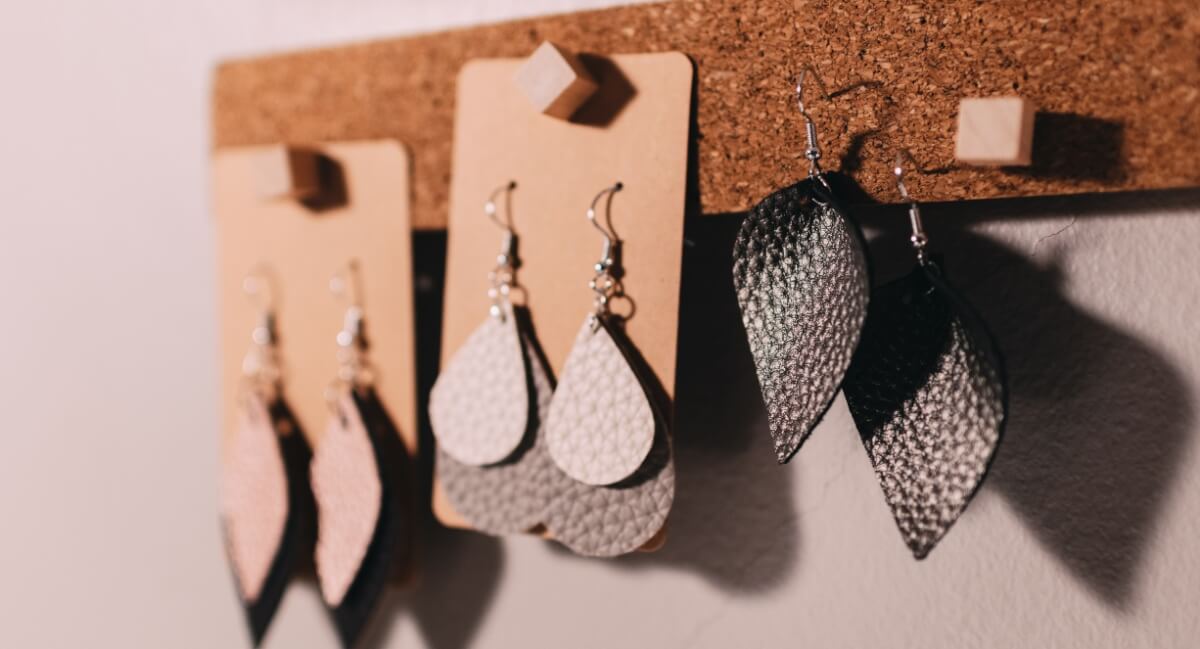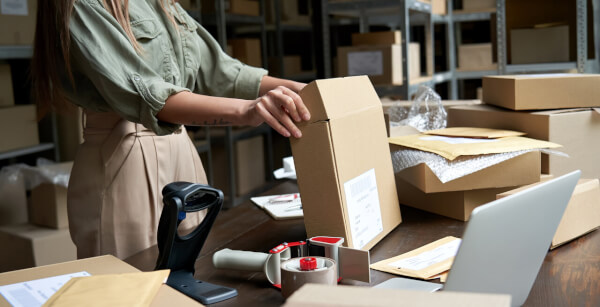Xero pricing Australia: Plans, costs & features guide
Explore Xero pricing in Australia. We break down all 4 plans, hidden costs, and features like payroll & multi-currency. Find more.

Etsy is an ideal marketplace for creators of all kinds in 2025. While it remains a hot spot for crafters and jewellers, sellers designing digital products and original artwork are also enjoying success with the 95+ million active buyers on the platform¹.
But just how easy is it to sell on Etsy, and is it worthwhile for your business? This blog looks at how to set up an Etsy shop and what products you can sell, and lists some of the fees and account requirements.
You might also be thinking about how you’ll get paid when selling on Etsy, especially to international buyers. We'll explore business account solutions like Wise Business that can be leveraged to transfer Etsy payments in multiple currencies and avoid paying high currency conversion fees.
First, let’s cover the basics of selling on Etsy.
| Table of contents |
|---|
Sign up for the Wise Business account! 🚀
Etsy works similarly to other online marketplaces. You sign up for an account and create a virtual Etsy shop, where you can add listings for your products. You pay fees to Etsy for listing, transactions, and payment processing, and you are then paid by the site at regular intervals after your items sell. Everything can be managed online or using the app.
It’s pretty easy to start selling on Etsy. All you need to do is register for an account, answer a few quick questions about your business experience, and then create a name for your shop and open it. However, you do have to verify your identity before going “live”. This involves providing a photo ID with a selfie.
Etsy states that you don’t need a business licence to get started.
However, you must register for an Australian Business Number (ABN) and Goods and Services Tax (GST) if your shop generates more than $75,000 in revenue⁹. While most people think of selling on Etsy as a “side gig,” all sellers must comply with Australian laws, especially when earning lots of money. This extends to products too — all items must meet Australian consumer and safety standards.
Here’s what you need to do to set up your account and get it running:

There are a few practical considerations to take note of when using Etsy, especially when selling to buyers overseas.
Yes, Etsy has 8+ million active sellers worldwide and is considered a safe and trusted marketplace¹. The platform offers Seller Protection for eligible transactions, which can cover you in cases of non-delivery or payment issues up to the value of $250 USD⁴. Payments are also processed securely, and buyer-seller communications are monitored within the platform.
That said, sellers should take precautions to make their experience safer, both for themselves and the buyer:
Before starting, make sure you’ve read Etsy’s help guide with best practices and shop policies. This will give you all the information you need to operate safely on the platform.
All Etsy sellers are enrolled in the free, default plan automatically. There is no monthly subscription fee if you just want to use basic tools to list items and manage your shop.
However, for each of your products, there are three basic selling fees⁵:
There is also an optional Offsite Ads fee. This is where Etsy advertises your products across the web. If you make a sale through one of these adverts, you’ll pay Etsy a fee of 15%. You can choose whether to participate in these advertising services when you open your shop.
Etsy also offers a Plus package for $10 USD per month. All the same, basic fees apply, but you get access to advanced features. These include new tools for customising your shop, and your own custom .com store address, plus 15 “free” listings and Etsy Ads credits ($5 per month)⁶.

As you’ll be organising shipping yourself when selling on Etsy, you’ll also need to cover the costs. The rates will depend on where you’re delivering in Australia and the package size⁷. It’s a good idea to get a ballpark figure for your shipping costs domestically and overseas before you start.
Fortunately, Etsy doesn’t charge a fee for shipping costs; this is included in the 6.5% transaction fee. However, if you’re shipping your Etsy items internationally, remember that you’ll also need to look into the tax and customs requirements for each destination country.
Etsy has a very extensive list of product categories, which were recently updated to make sure there’s a “logical place” for pretty much every item you want to sell.
Handmade items are how Etsy made its name. These are any types of jewellery, furniture, craft items, clothing, and accessories that are unique and “made by a seller.” Etsy states that reselling handmade goods is prohibited, so these items must be genuinely created and assembled by you¹⁰.
If you’ve got older items like antiques, collectables, retro homeware, and clothing to sell, you can broaden their appeal with the vintage item category. However, there are certain restrictions. Etsy defines “vintage” as anything older than 20 years, and it may request additional photos and information to prove their authenticity¹¹.

Etsy is also a great place for selling materials and tools for creative projects. Popular items include beads, stones, gems, fabrics, yarn, sewing kits, and digital downloads of sewing patterns.
Digital products are growing in popularity on Etsy. If you’re just starting out, selling digital items is a low-cost and scalable way to get your Etsy shop up and running. There’s also the added bonus of not needing to physically ship items.
Products you can sell include:
These are just examples of what you can sell. Etsy has 15 “top-level” categories with hundreds of sub-categories catering to the demands of buyers and sellers¹².
A Wise Business account is a smart choice for Australian Etsy sellers looking to enhance their earnings from international sales. Etsy charges a 2.5% currency conversion fee when your earnings are paid out in a different currency than your shop's listings.
With Wise Business, a one-time fee of 65 AUD gives businesses access to local account details in 8+ currencies, including USD and GBP. This allows businesses to receive international payments without losing much on currency conversions. This means more of your hard-earned money stays in your pocket, giving you greater control over your finances and making it easier to manage your global business.
Expanding a business globally opens up exciting opportunities, but also new challenges like receiving payments across borders. Hidden foreign transaction fees and hefty currency conversions involved with international payments can eat into your profits and time.
Wise Business serves as a cost-effective solution where you can receive money from around the world at the speed and price of local payments.
Transform the way you receive payments with Wise Business:
Sign up for the Wise Business account! 🚀
This general advice does not take into account your objectives, financial circumstances or needs and you should consider if it is appropriate for you.
1. Do I need an ABN to sell on Etsy?
No, you don’t need an ABN to start selling on Etsy in Australia. However, if you’re planning to run your shop as a business or are earning above $75,000 in revenue annually, you must register for an ABN for bookkeeping and to pay tax⁹. It’s useful to refer to the government’s guidance on the distinction between a business and a hobby to make sense of your legal obligations.
2. Can you sell AI-generated art on Etsy?
Yes, Etsy updated its guidelines to confirm that sellers can use AI tools to create and sell artwork. However, you must be clear in the product listing description that the item was AI-generated¹³.
3. How old do you have to be to sell on Etsy?
You must be at least 18 years of age to create an account on Etsy. However, Etsy says it “welcomes minors” aged 13 who may have artistic or entrepreneurial talent, as long as they have the permission of a parent or legal guardian, and are supervised when using the platform¹⁴.
4. Can you sell Canva designs on Etsy?
Yes, you can sell designs made with Canva. But they must be “original” and not merely templates that have been resized, cropped, or recoloured¹⁵. Canva says people can sell things like posters, mugs, t-shirts, and ebooks that are in line with its Content Licence Agreement. It’s best to review Canva’s full terms and conditions before you start selling Canva designs on Etsy.
Sources:
*Please see terms of use and product availability for your region or visit Wise fees and pricing for the most up to date pricing and fee information.
This publication is provided for general information purposes and does not constitute legal, tax or other professional advice from Wise Payments Limited or its subsidiaries and its affiliates, and it is not intended as a substitute for obtaining advice from a financial advisor or any other professional.
We make no representations, warranties or guarantees, whether expressed or implied, that the content in the publication is accurate, complete or up to date.

Explore Xero pricing in Australia. We break down all 4 plans, hidden costs, and features like payroll & multi-currency. Find more.

Wondering how to reactivate your ABN? Find out more on ABN reactivation, eligibility, required documents, and overall process.

Discover how Xero integration connects works and connects to over 1,000 apps, from ecommerce to payments. Read here.

Learn how to create a compliant tax invoice in Australia. We cover ATO requirements, GST rules, mandatory fields, and more.

Aussie guide on finding the right dropshipping supplier. Explore directories vs wholesalers, checklists, and saving on international payments.

What does it mean to buy direct from China suppliers safely. Discover platforms, steps, and best ways to pay vendors overseas.